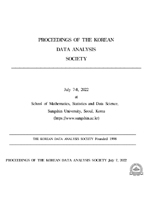Multinationality, Portfolio Coordination, and Downside Risk
- 한국자료분석학회
- 한국자료분석학회 학술대회자료집
- 2022년 하계학술대회 발표집
-
2022.07201 - 205 (5 pages)
- 6

We take the multinational operational flexibility perspective anchored in the real options theory and examine how multinational corporations’ coordinative factors at the portfolio level affect downside risks of multinationality. We extend the Tong and Reuer’s (2007) study of the curvilinear relationship of multinationality to downside risks by testing downside risk reduction effects of those portfolio factors that facilitates effective coordination over foreign subsidiaries. By employing the Tobit two-stage model on a large sample of Korean multinational corporations, we also find a U-shaped relationship between multinationality and downside risks. We present a new finding that a broader existence of intra-firm trade, key expatriates, or regional headquarters among foreign subsidiaries curbs downside risk, shifting the minimum in the U-shaped curve to a higher multinationality level. These findings imply that a well-crafted configuration and coordination of dispersed operations across countries is essential for retention and actualization of the real options value of multinationality.
1. Research Methodology
2. Results
3. Discussion
References
(0)
(0)